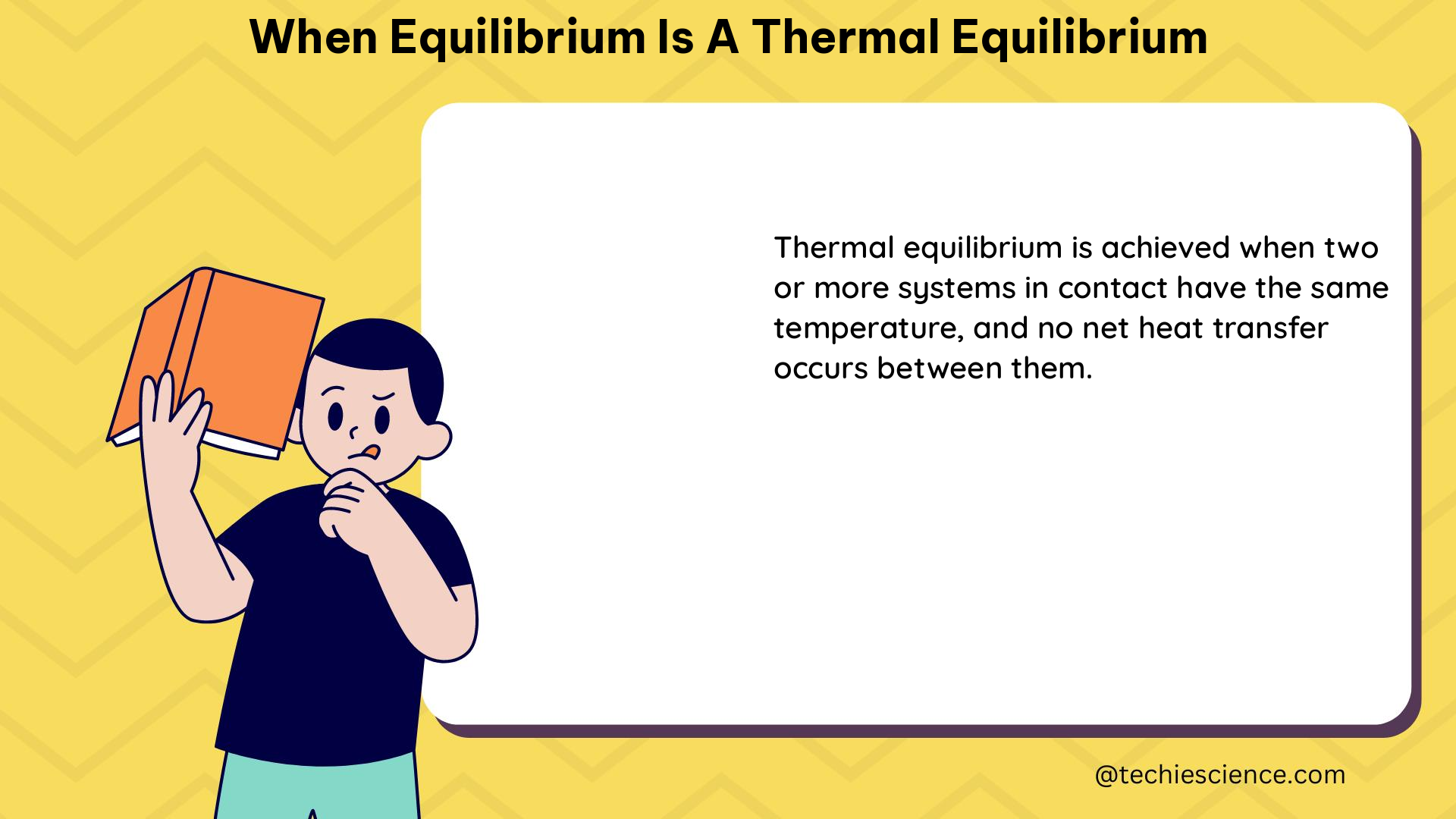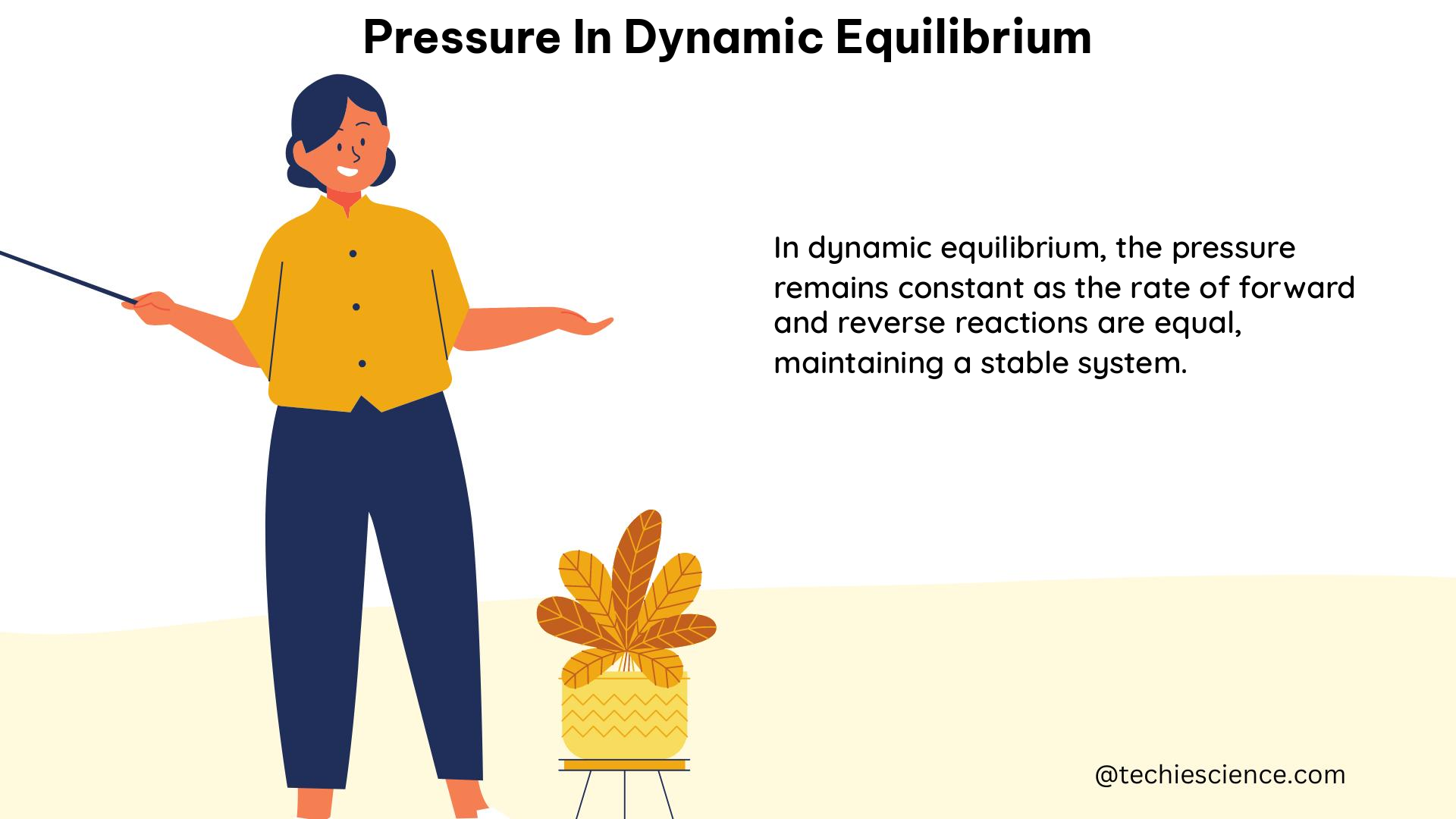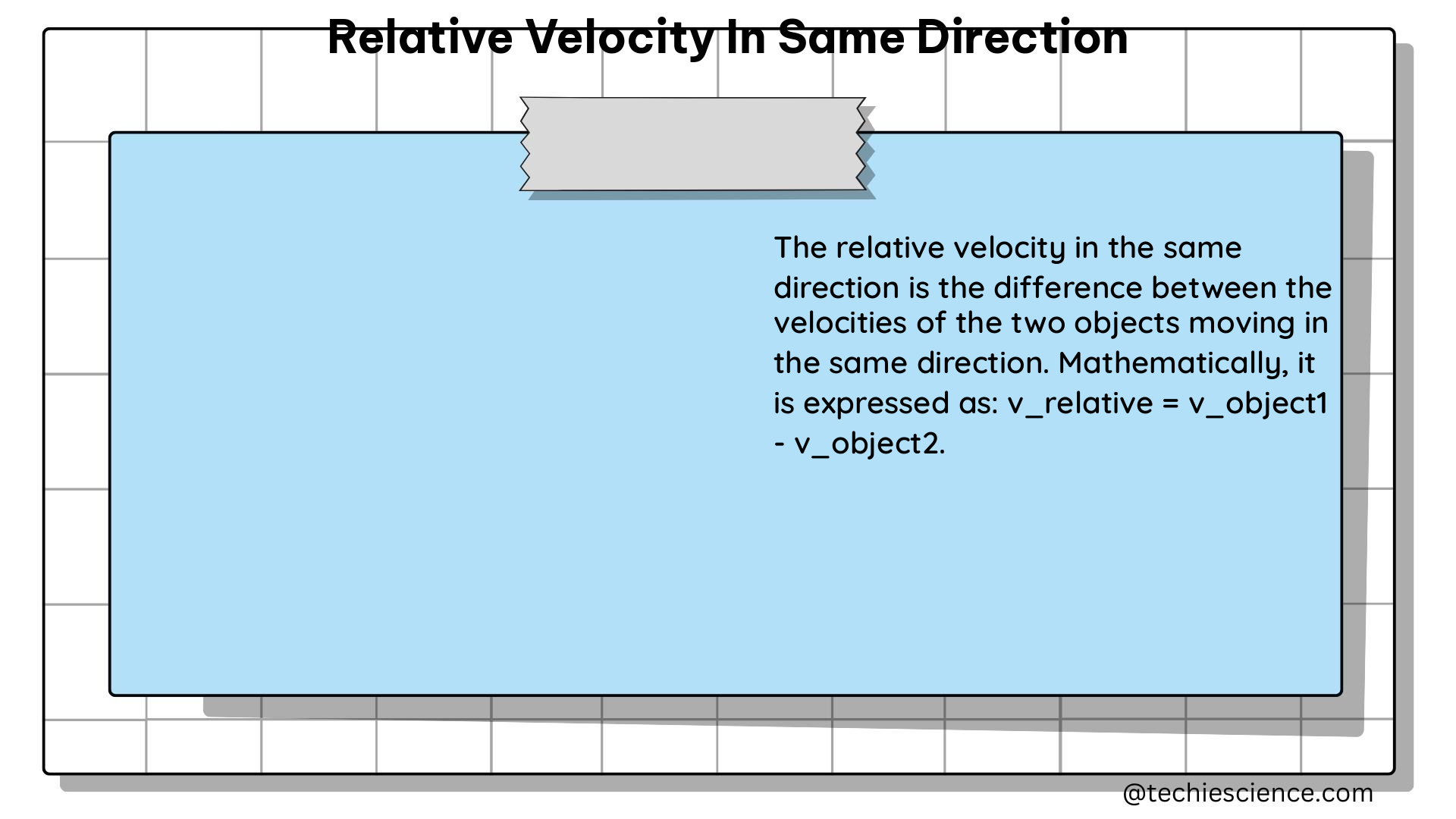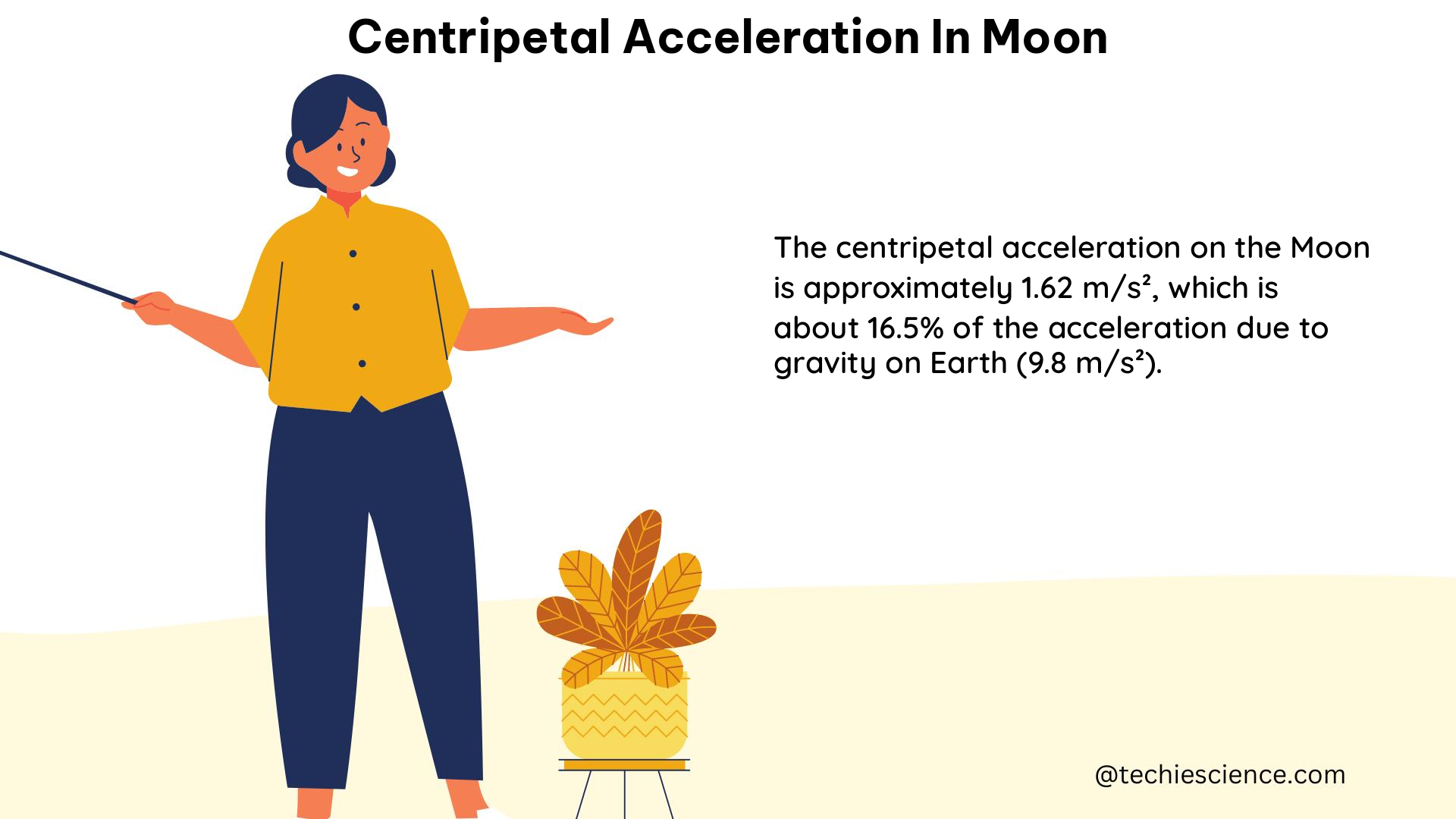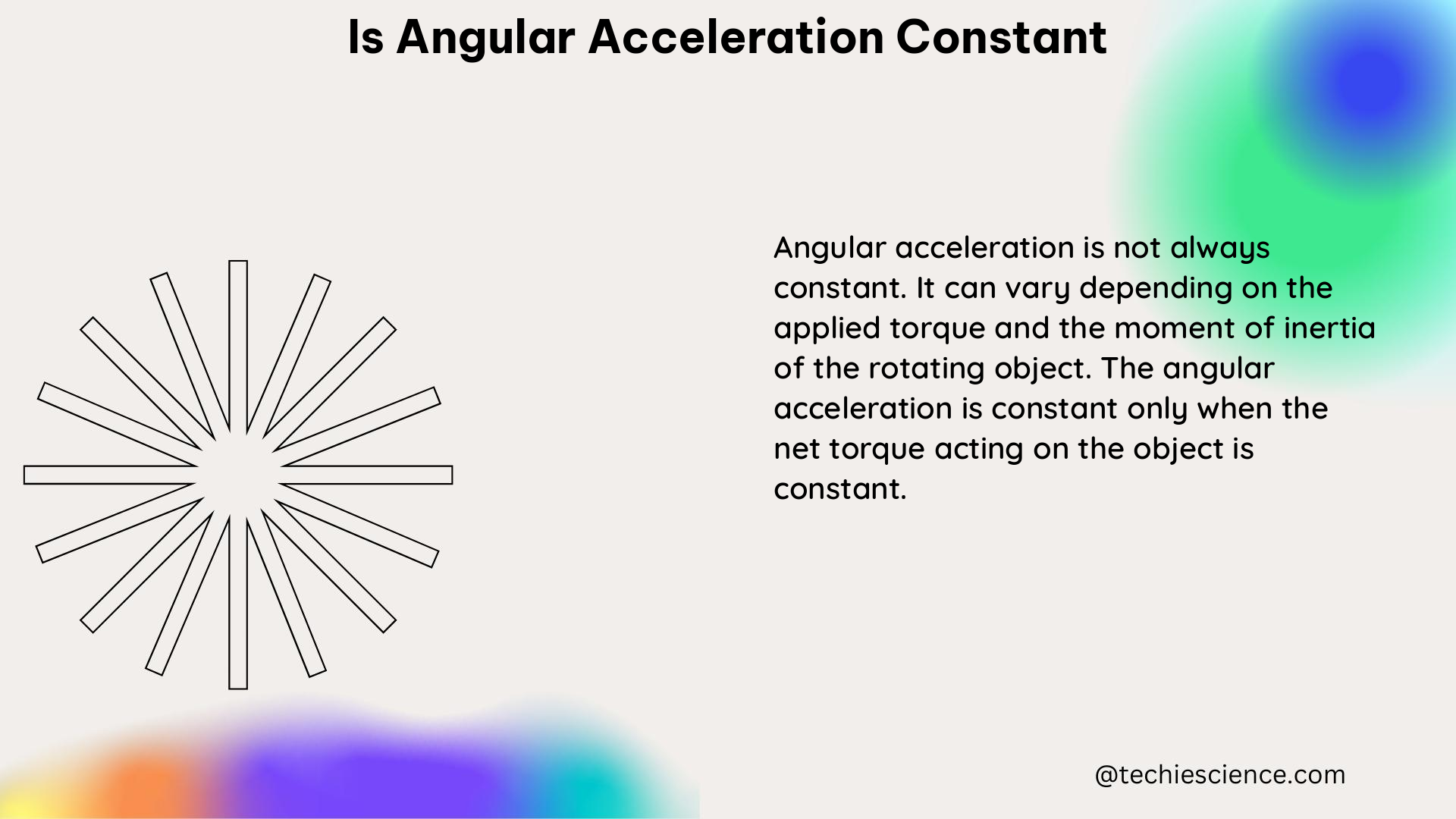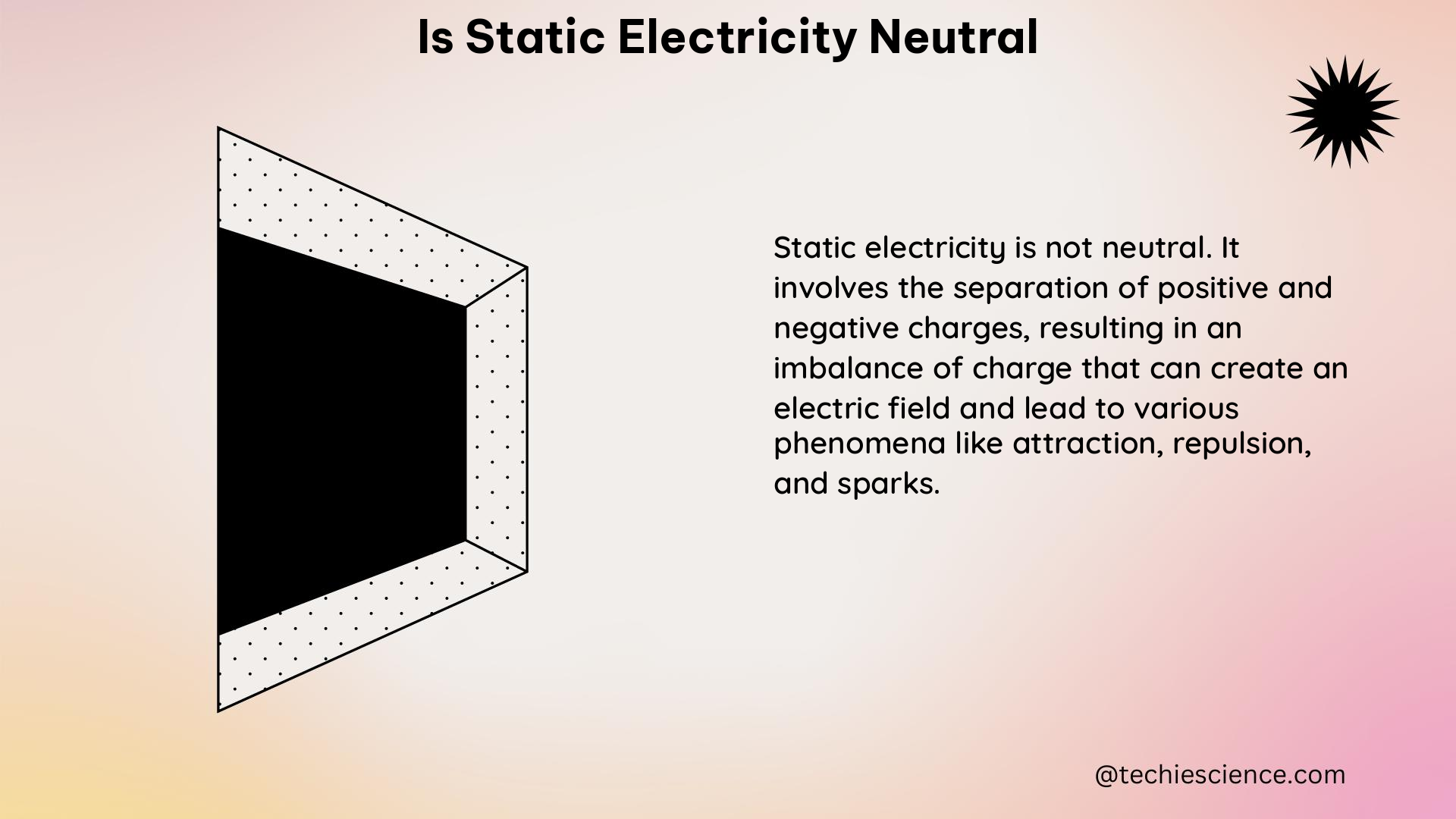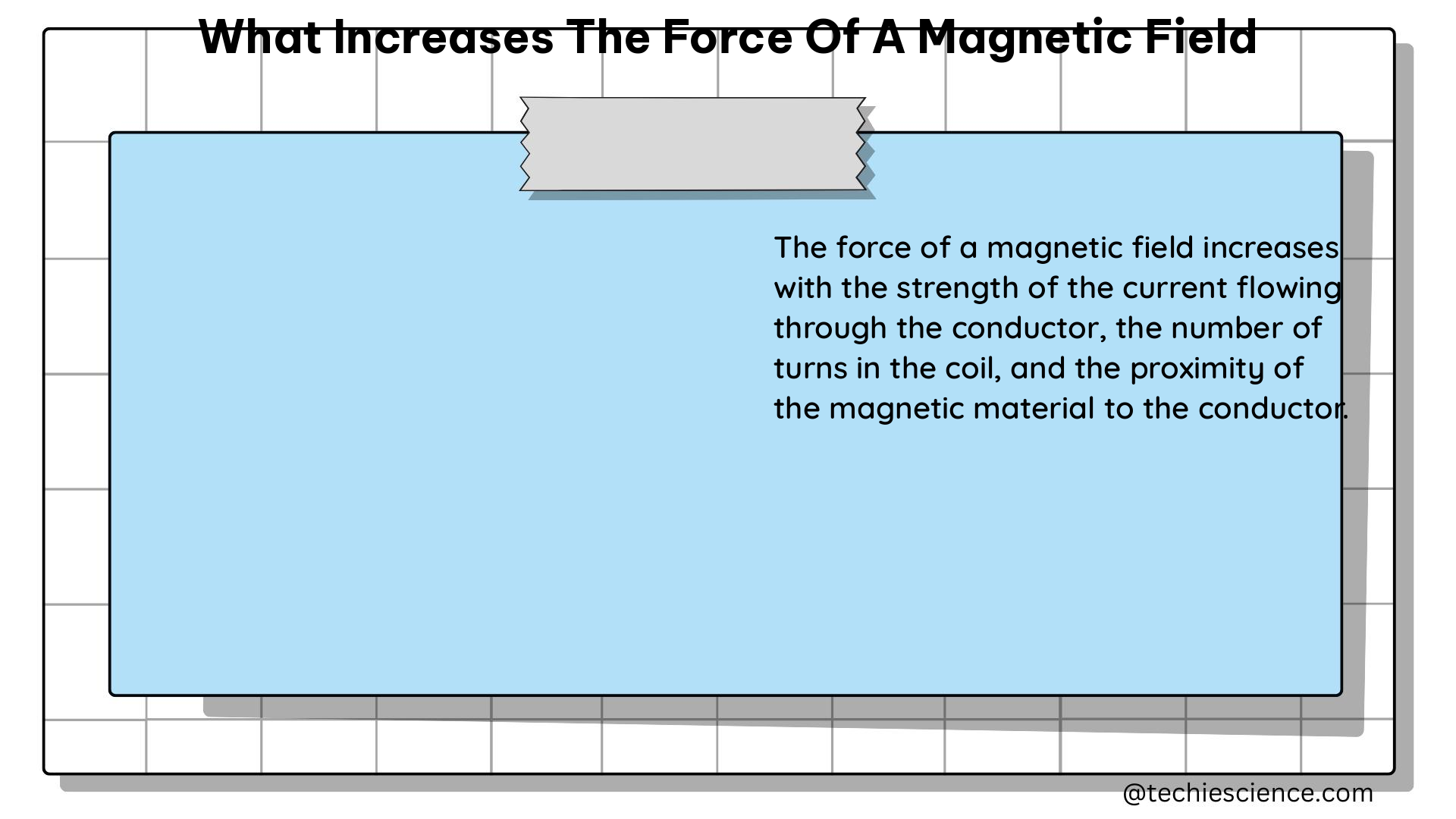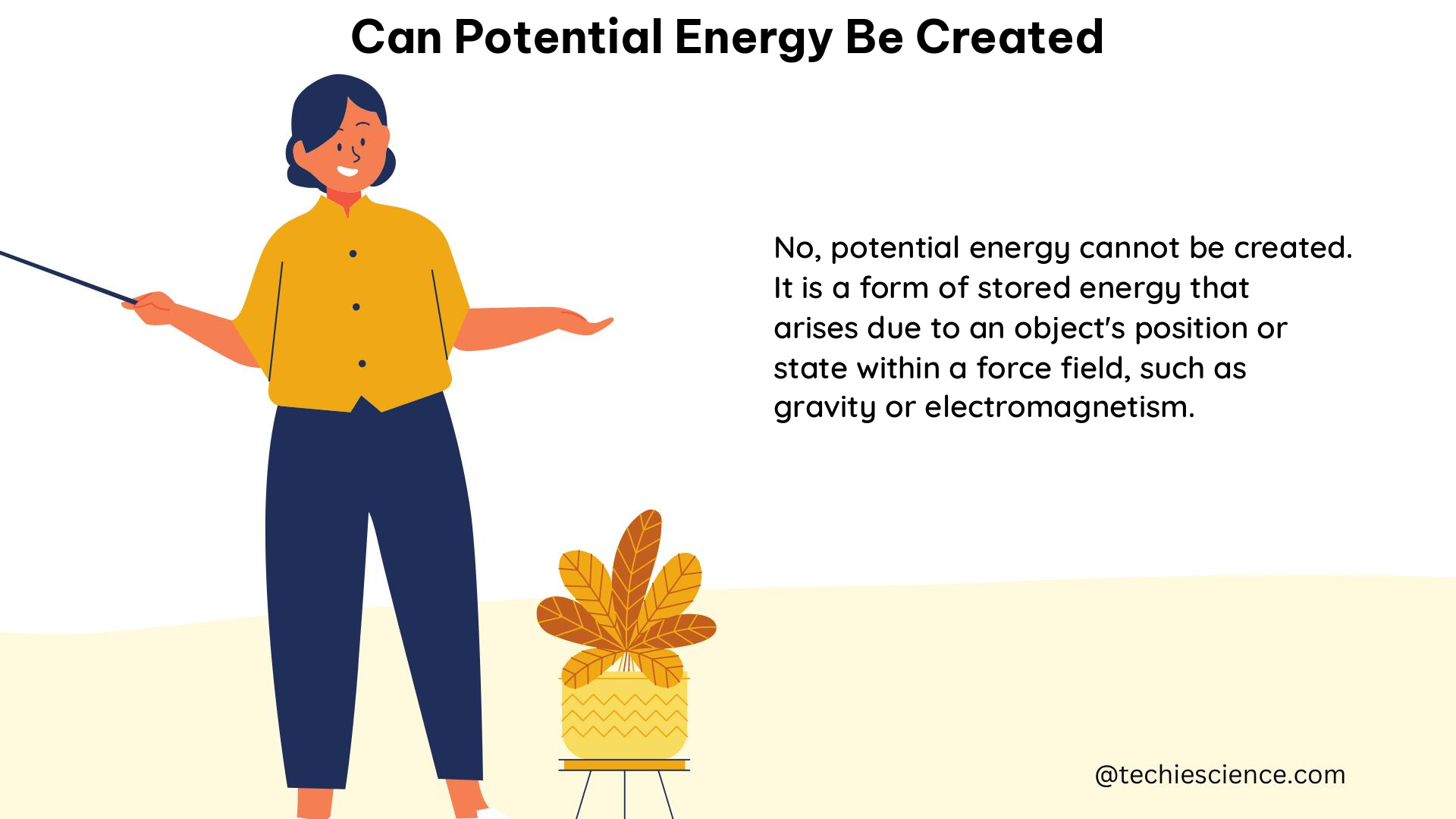Magnetic flux is a fundamental concept in electromagnetism that describes the amount of magnetic field passing through a given surface. Interestingly, magnetic flux can indeed be negative, and its sign is determined by the direction of the magnetic field relative to the surface of integration. This concept is crucial in understanding various electromagnetic phenomena, such as Faraday’s law of induction and Lenz’s law.
Understanding Magnetic Flux
Magnetic flux, denoted by the symbol Φ, is defined as the product of the magnetic field strength (B) and the area (A) of the surface through which the field passes, with the angle (θ) between the magnetic field and the normal to the surface taken into account. Mathematically, the magnetic flux is expressed as:
Φ = ∫ B⋅dA = ∫ B cos(θ) dA
where the integral is taken over the surface of interest.
The sign of the magnetic flux is determined by the relative orientation of the magnetic field and the surface normal. If the magnetic field is parallel to the surface normal, the flux is positive. Conversely, if the magnetic field is antiparallel to the surface normal, the flux is negative.
Positive and Negative Magnetic Flux
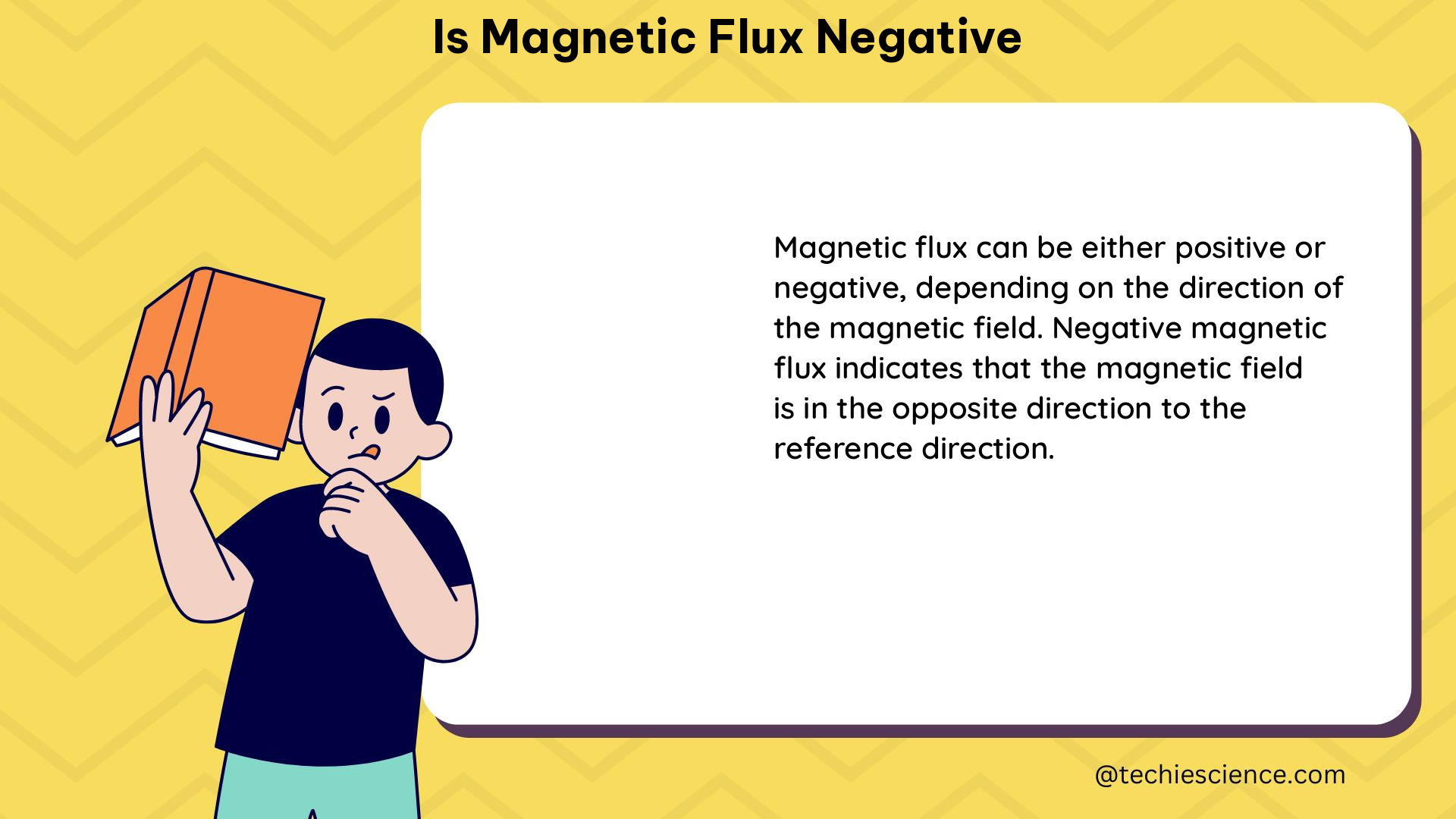
To illustrate the concept of positive and negative magnetic flux, consider a simple example:
Imagine a rectangular surface with an area vector pointing in the positive z-direction. If the magnetic field is directed in the positive z-direction, the magnetic flux through the surface will be positive. However, if the magnetic field is directed in the negative z-direction, the magnetic flux through the surface will be negative.
This can be expressed mathematically as follows:
-
If B is in the positive z-direction and the surface normal is also in the positive z-direction, then θ = 0°, and the magnetic flux is positive:
Φ = ∫ B cos(0°) dA = ∫ B dA -
If B is in the negative z-direction and the surface normal is in the positive z-direction, then θ = 180°, and the magnetic flux is negative:
Φ = ∫ B cos(180°) dA = -∫ B dA
The sign of the magnetic flux is crucial in understanding various electromagnetic phenomena, as it determines the direction of the induced electromotive force (EMF) and the induced current in a coil, as described by Faraday’s law of induction and Lenz’s law.
Faraday’s Law of Induction and Negative Magnetic Flux
Faraday’s law of induction states that the induced EMF in a coil is proportional to the negative of the time rate of change of the magnetic flux through the coil. Mathematically, this is expressed as:
ε = -N dΦ/dt
where ε is the induced EMF, N is the number of turns in the coil, and dΦ/dt is the time rate of change of the magnetic flux through the coil.
The negative sign in Faraday’s law indicates that the induced EMF opposes the change in magnetic flux. This is a consequence of Lenz’s law, which states that the direction of the induced current is such that it creates a magnetic field that opposes the change in the original magnetic flux.
If the magnetic flux through the coil is increasing, the induced EMF will be negative, as it opposes the increase in flux. Conversely, if the magnetic flux through the coil is decreasing, the induced EMF will be positive, as it opposes the decrease in flux.
Examples of Negative Magnetic Flux
-
Coil in a Changing Magnetic Field: Consider a coil placed in a magnetic field that is decreasing over time. As the magnetic field decreases, the magnetic flux through the coil also decreases. According to Faraday’s law, this will induce a positive EMF in the coil, as the induced current will create a magnetic field that opposes the decrease in the original magnetic flux.
-
Rotating Coil in a Uniform Magnetic Field: Imagine a coil rotating in a uniform magnetic field. As the coil rotates, the angle between the magnetic field and the surface normal changes, causing the magnetic flux through the coil to vary. When the coil is oriented such that the magnetic field is antiparallel to the surface normal, the magnetic flux will be negative, and the induced EMF will be positive, as it opposes the decrease in the original magnetic flux.
-
Magnetic Shielding: Magnetic shielding is a technique used to protect sensitive electronic devices from the effects of external magnetic fields. This is often achieved by surrounding the device with a material that has high magnetic permeability, such as mu-metal. The shielding material creates a region of negative magnetic flux, effectively canceling out the external magnetic field and protecting the device inside.
Numerical Example
To illustrate the concept of negative magnetic flux, let’s consider a numerical example:
Suppose a rectangular coil with an area of 0.1 m^2 is placed in a uniform magnetic field of 0.5 T, directed in the positive z-direction. The coil is then rotated such that the angle between the magnetic field and the surface normal changes from 0° to 180°.
-
When the coil is oriented such that the surface normal is parallel to the magnetic field (θ = 0°):
Φ = ∫ B cos(0°) dA = ∫ (0.5 T) (1) (0.1 m^2) = 0.05 Wb -
When the coil is oriented such that the surface normal is antiparallel to the magnetic field (θ = 180°):
Φ = ∫ B cos(180°) dA = ∫ (0.5 T) (-1) (0.1 m^2) = -0.05 Wb
In this example, the magnetic flux changes from a positive value of 0.05 Wb to a negative value of -0.05 Wb as the coil is rotated by 180°. This change in the sign of the magnetic flux will induce a positive EMF in the coil, as the induced current will create a magnetic field that opposes the decrease in the original magnetic flux.
Conclusion
In summary, magnetic flux can indeed be negative, and its sign is determined by the relative orientation of the magnetic field and the surface normal. This concept is crucial in understanding various electromagnetic phenomena, such as Faraday’s law of induction and Lenz’s law. By understanding the behavior of positive and negative magnetic flux, physicists and engineers can better design and analyze electromagnetic systems, leading to improved performance and efficiency.
References:
- Griffiths, D. J. (2013). Introduction to Electromagnetism (4th ed.). Pearson.
- Serway, R. A., & Jewett, J. W. (2014). Physics for Scientists and Engineers with Modern Physics (9th ed.). Cengage Learning.
- Halliday, D., Resnick, R., & Walker, J. (2013). Fundamentals of Physics (10th ed.). Wiley.
- Zill, D. G., & Cullen, M. R. (2009). Advanced Engineering Mathematics (4th ed.). Jones & Bartlett Learning.
